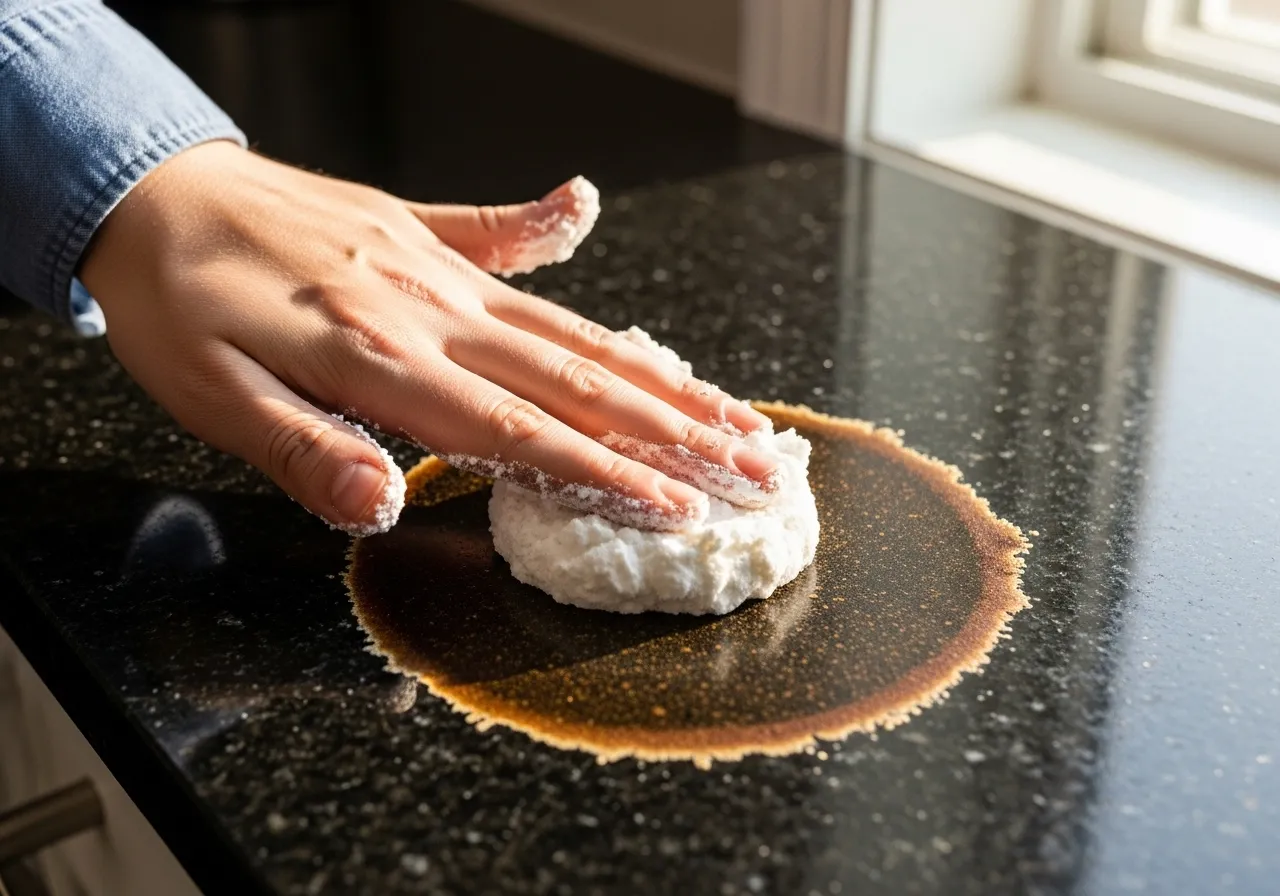
Recipe 2: The Gentle Scouring Scrub (Baking Soda Paste)
For messes that need a little more muscle than a simple spray, this baking soda scrub is your go-to solution. Baking soda is a mild abrasive, meaning it can scrub away tough, stuck-on grime without scratching most surfaces. It’s the perfect non-toxic alternative to harsh powdered cleansers and is a star player when it comes to cleaning with vinegar and baking soda.
The Recipe: A Simple, Powerful Paste
This recipe is more of a method than a strict formula. You can easily adjust the consistency based on your cleaning task.
Ingredients:
Baking Soda
Water
Optional: A few drops of mild dish soap for extra grease-cutting power.
Instructions:
In a small bowl, start with about a half-cup of baking soda. Add water, one tablespoon at a time, and stir until you have a thick, smooth paste. You are aiming for a consistency similar to toothpaste. If you add too much water and it becomes runny, just stir in a little more baking soda. If you’re cleaning a greasy area, like a kitchen sink, add a few drops of dish soap into your paste.
How to Use Your Scouring Scrub
This paste works best when given time to do its job. Patience is part of the process.
Step 1: Apply the Paste. Using your fingers or a spatula, spread a thick layer of the baking soda paste directly onto the surface you want to clean. This could be the inside of a stained coffee mug, the bottom of a grimy sink, or the grout lines on your tile floor.
Step 2: Let It Sit. Allow the paste to sit for at least 15-20 minutes. For really tough jobs, like a burnt-on food spot in a pan, you can let it sit for several hours or even overnight. This gives the alkaline properties of the baking soda time to break down the acidic food-based grime.
Step 3: Scrub Gently. Using a non-abrasive sponge, a soft-bristled brush, or a damp microfiber cloth, gently scrub the area in a circular motion. You’ll feel the baking soda providing a gentle friction that lifts the stain.
Step 4: Rinse Thoroughly. This is a very important step. Rinse the surface completely with warm water until all the gritty residue is gone. Wiping with a clean, damp cloth works well. If you leave baking soda residue behind, it will dry to a hazy white film.
The Fizz Factor: Combining Vinegar and Baking Soda
You’ve probably seen the volcanic fizz that happens when you mix vinegar and baking soda. This can be a useful mechanical cleaning tool. When baking soda (a base) and vinegar (an acid) are combined, they react to create carbon dioxide gas, which are the bubbles you see. This bubbling action can help physically loosen dirt and grime from tight spaces.
How to use it safely: Don’t mix them in a closed container! The pressure can build up and cause it to burst. Instead, use them in sequence on a surface. For a slow drain, pour a half-cup of baking soda down the drain, followed by a cup of vinegar. Let it fizz for 15 minutes, then flush with very hot water. For a grimy surface, sprinkle it with baking soda first, then spray it with your All-Purpose Cleaner. Let it bubble, scrub, and then rinse completely.
Remember, the chemical reaction neutralizes both the acid and the base, leaving you with saltwater. The main cleaning power comes from the initial physical agitation of the fizz.
Surface Safety: Where to Scrub
Baking soda is gentle, but it is still an abrasive.
YES – Use It Here:
Stainless Steel and Porcelain Sinks: Excellent for removing stains and shining them up.
Bathtubs and Showers: Cuts through soap scum and grime on ceramic and porcelain.
Tile and Grout: Apply the paste to grout lines and scrub with an old toothbrush.
Oven Interiors: A safe, fume-free way to clean baked-on spills. Spread the paste, let it sit overnight, and wipe out the next day.
Pots and Pans: Removes burnt-on food from stainless steel or ceramic cookware.
CAUTION – Be Careful Here:
Glass Cooktops: It can be effective, but you must be very gentle to avoid microscopic scratches. Make sure the paste is wet and use a soft cloth, not an abrasive sponge.
Fiberglass or Acrylic Tubs: These materials are softer than porcelain and can be scratched more easily. Test in an inconspicuous spot first and use very light pressure.
Aluminum: Baking soda can cause aluminum cookware to oxidize or discolor over time. Avoid prolonged contact.

















